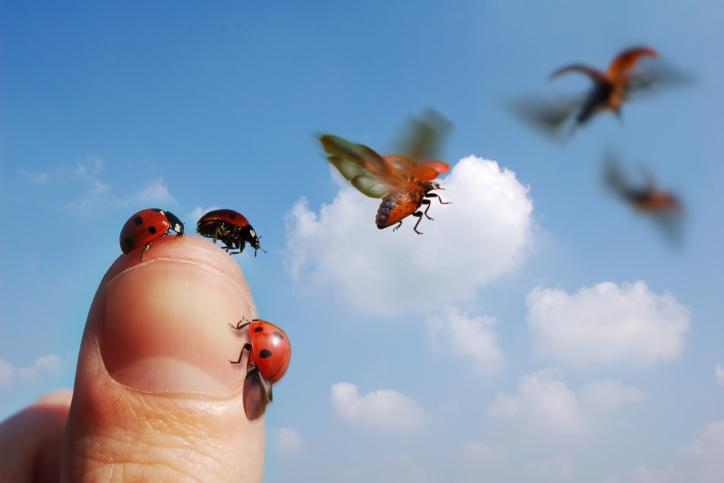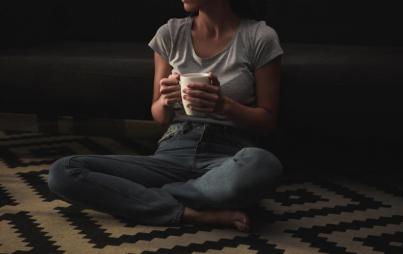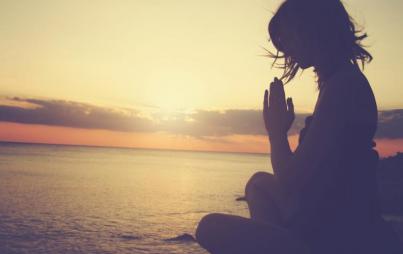
I collided with the smell of freshly cut two-by-fours and clean concrete. I came to the hardware store in search of pollinator plants, thinking I’d single-handedly save the bees. But I left instead with 20,000 ladybugs.
How could I not after running into a large, orange-aproned man who told me: “They’ll be dehydrated from their journey when you release them, so you want to make sure they get some water right away. If you do it at night, they’ll stay in one place.”
I held a pulsing packet. They were measured by thirds of a cup like an ingredient for muffins.
“Put out a little bowl of water with some pebbles in it so they’ll be able to perch and get a good drink. They’ll be less afraid of drowning that way.” An hour later, with a small army of ladybugs and a bag of sunflower seeds, I sat parked at the top of Laurel Canyon spitting shells out the window, watching the sunset. As the sun crept toward the horizon, I grabbed a Tupperware from the back of the car and dumped out its contents—a pack of hair ties, lip gloss, an empty bottle of sunscreen, a half-eaten granola bar—remnants of a poorly-constructed emergency kit.
I looked for pebbles in the weeds and came up with mostly bottle caps. They seemed to work just as well. I poured water to the brink of Bottle Cap Island and staked out some good places to perch. I pulled apart the top of the mesh bag and peered inside.
They didn’t seem aware of their newfound freedom. A brave one crawled up the side of the bag and opened her wings, a hardtop convertible with legs. As she took off, helicoptering straight up and out of the bag, the others took notice. They rushed to the open air in droves, swarming for a glorious moment before a gust of wind came and blew them away. My Tupperware sat in the dirt, untouched.







